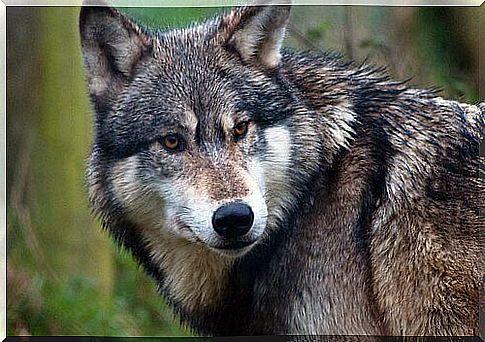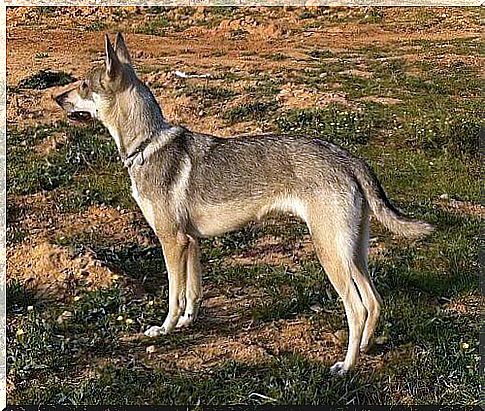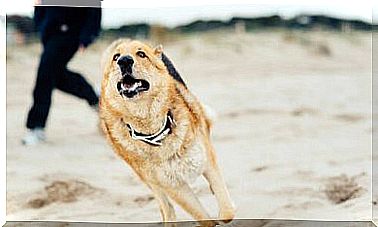The Evolutionary Difference Between Dogs And Wolves

It was always said that dogs came from wolves. How much is right in that? Today we want to talk about the evolutionary difference between dogs and wolves, to better understand how the two species came to coexist.
The evolutionary difference between dogs and wolves
the evolution of the wolf
It is known that the first examples of wolves, very similar to the dogs we know today, have existed for about 800,000 years. However, habitat, ecological factors, predators and other reasons influenced the genetic structure of wolves.
It is believed that its origin was in North America and that, over time, it spread to Asia and South America, although there is much debate about this. Others believe, on the contrary, that the origin was in Asia and that it later extended to the United States. What everyone agrees is that they come from canids.

In the Pleistocene, it was known a species of giant wolf also called terrible wolf, for its appearance and behavior. It lived in North America and like many other dogs, they lived and hunted in groups. The kennel dirus was another known species, smaller in size and short-legged, something that did not make it a good runner. But he had another virtue: a highly developed jaw that had the ability to grind bones. Both species have been extinct for many years.
the evolution of the dog
As we talked about earlier, dogs are certainly believed to come from the wolf. But how did this happen? We will see. It is believed that about 12,000 or 15,000 years ago, a wolf was domesticated in China, although other people claim this happened before. What is certain is that the first humans who inhabited China were closely related to the small wolves, which are known to be undomesticated. This would be the first proof of coexistence between wolves and humans.
The evolutionary difference between dogs and wolves is not something you can date or locate with certainty, but we can know how humans and wolves managed to cohabit. Apparently, both humans and wolves had very similar social activities, such as family life, which characterized wolves and humans at that time. This united the two species that helped each other in hunting and survival.
Humans did not take long to realize the similarities between them and wolves, and sought the support of these animals to cooperate in some way in hunting. They used the wolves to go after their prey and, in return, the humans gave them the leftovers they didn’t eat. Thus, the wolves began to be more domesticated and to change their wild personality for a more affectionate one, oriented towards living with the human being. Hence the dogs, which were used as work animals and later as pets.
Similarities between wolves and dogs
Despite the evolutionary difference between dogs and wolves, there are several similarities to take into account. For example:

- Both howl. Both species howl and bark, although wolves bark less than dogs.
- Developed senses. Smell and ear are highly developed, both in wolves and dogs.
- Communication. Both communicate through visual, olfactory and bodily signals.
- Hide food. The two dig to hide food. Even when a dog is a pet and has its plate of food assured every day, it does not lose this habit, as it carries it in its gene.
As we said earlier, it is not possible to know exactly the time and form in the evolutionary difference between dogs and wolves. There are many clues that help us determine the details, that give us more information about this.
Main image source: Barnaby_S









